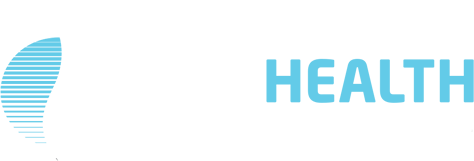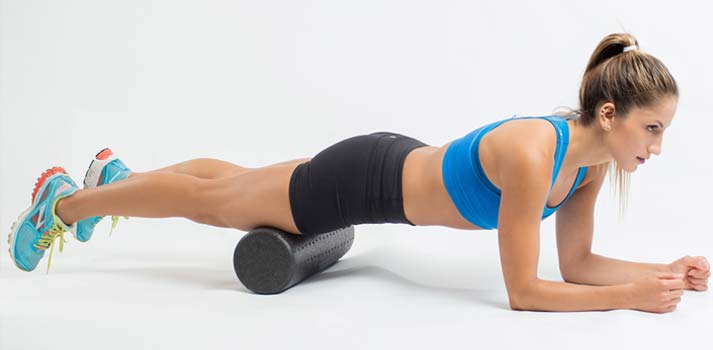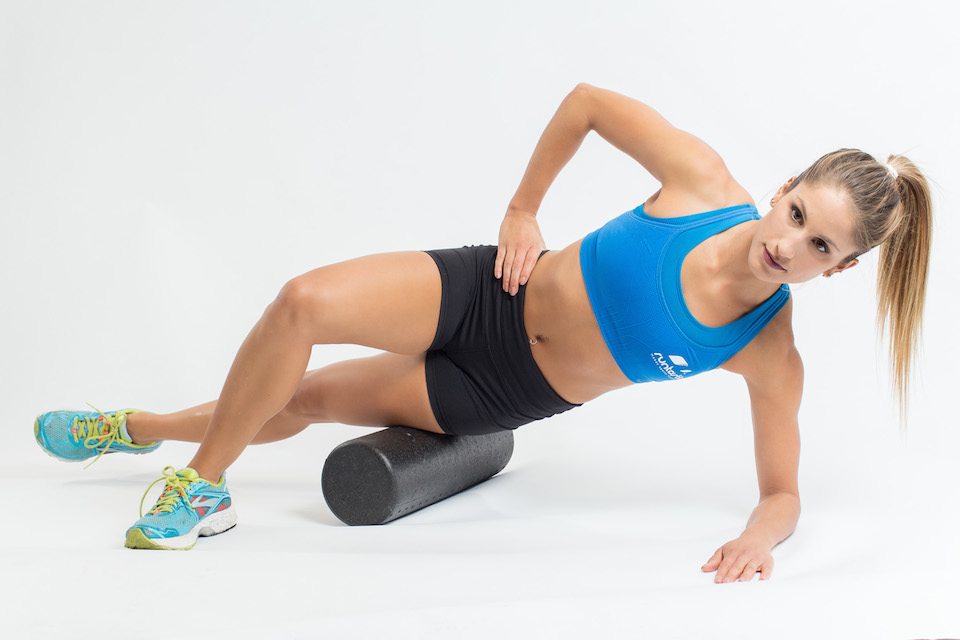Blog
The Art of Foam Rolling
Take home advice is something that I love to give my clients to help ensure they are caring for their bodies and muscles the best they can. One of the most common pieces of advice I often find myself giving is to practice self-myofascial release at home to assist in recovery and restoration of healthy muscle tissue. Self-myofascial release (SMR), more commonly known as “foam rolling”, is becoming a familiar recovery tool for people of all fitness levels. It can be performed with a foam roller, spiky ball, lacrosse ball or anything of the like. Foam rolling assists in relaxing tight muscles and breaking up any adhesions/knots in the muscle layers. While at times uncomfortable, it is an effective way of reducing muscle pain and improving range of motion to enhance performance.
The most common responses I get from my clients are along the lines of “it hurts too much” or “I don’t know if I’m using it correctly”.
It is important to find a SMR tool that suits you and your body. They come in all shapes, sizes and densities to cater for all body types and muscles.
If you find the pain unbearable when rolling out your muscles try looking for a softer, larger tool that allows you to distribute your weight more comfortably and control the pressure more effectively. (That’s the beauty of SMR – you control it!)
For those who are unsure how to utilise their SMR tool effectively, here are my top 3 rolling exercises to reduce pain and increase flexibility. I recommend spending about 60 seconds on each muscle. Find a tender point, hold, release and repeat!
Foam Rolling on the Back
Lying face up, place the foam roller horizontally under your shoulder blades. Keep your knees bent and feet grounded. Use your hands to support your neck. Switch on your core, lift your hips and press your feet into the floor to slowly roll back and forth up and down the back.
Tip – tilt back side to side to target different areas of your back.
Foam Rolling on Hamstring & Calves
Place the foam roller under your calf. Keep your hands flat under your shoulders with fingers pointing towards toes. Rest ankle on top of bottom ankle. Slowly roll from ankle to knee using your arms to control the movement. Continue up the leg to target hamstrings.
For less pressure, simply uncross your legs.
Foam Rolling on Quadriceps
Lying face down, place foam roller above knee and roll from knee to hip. Make the movements slow and controlled. Be sure to support your upper body with both forearms firmly pressed into the ground.
I prefer to put a cushion or towel under my elbows.
Foam Rolling on Iliotibial Band (ITB)
Lie on the side you wish to target with the foam roller under your hip. Cross the opposite leg over and place your foot flat on the floor. Support your body with your forearm and the resting flat foot. Rest your other hand on your hip and keep your head in line with your spine. Press your flat foot into the ground to control the slow roll down the side of your leg from hip to knee.
Take this one slow, as it can be the most uncomfortable area to roll.
Foam rolling exercises are the perfect recovery after a workout or hard day at work. Try do them as often as you can. Coupled with stretching and regular massage, foam rolling will have your muscles reaping the benefits for optimal performance. So, choose your weapon and start foam rolling! If you have any questions do not hesitate to ask one of our health practitioners at your next appointment.





